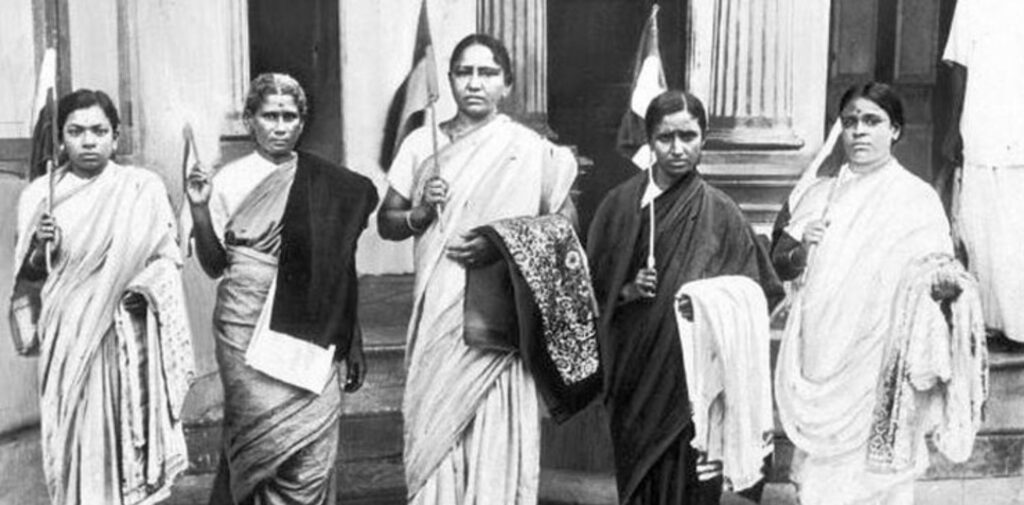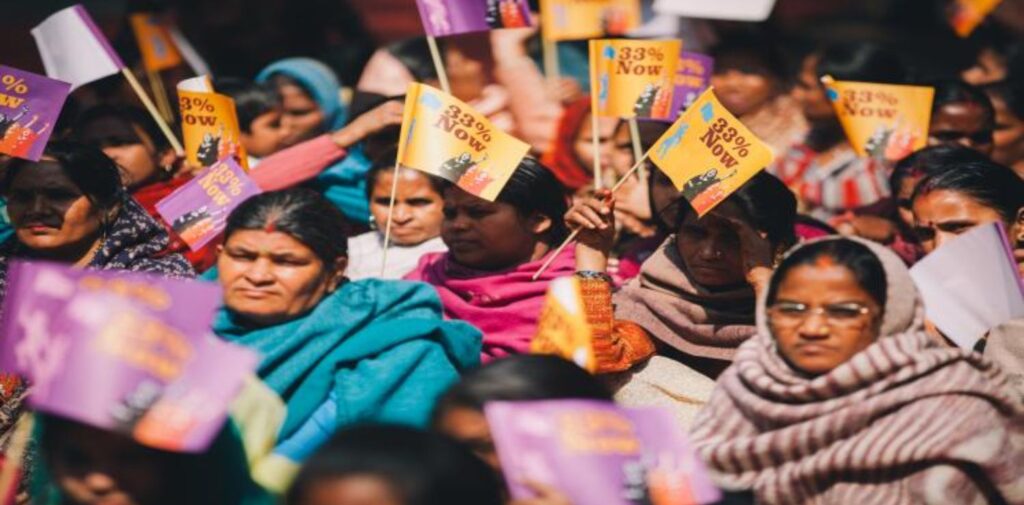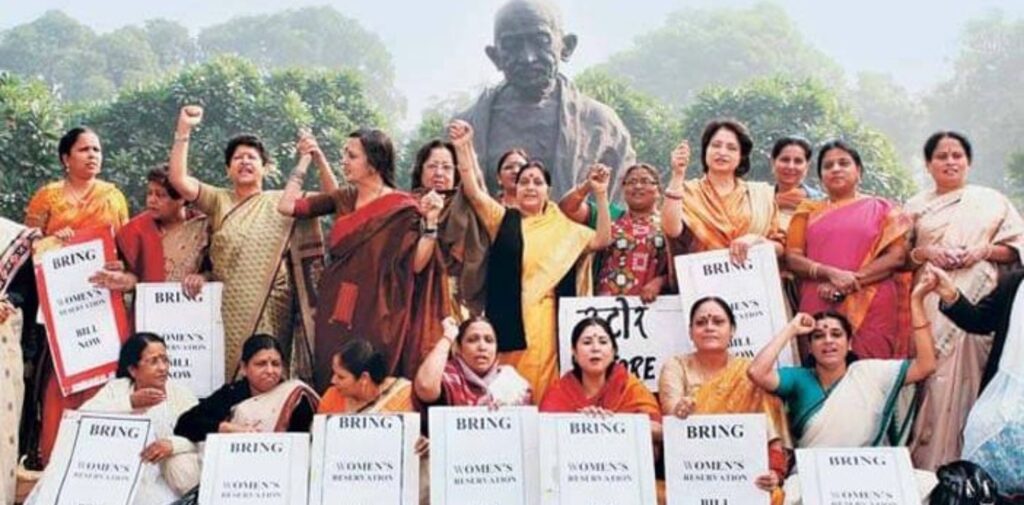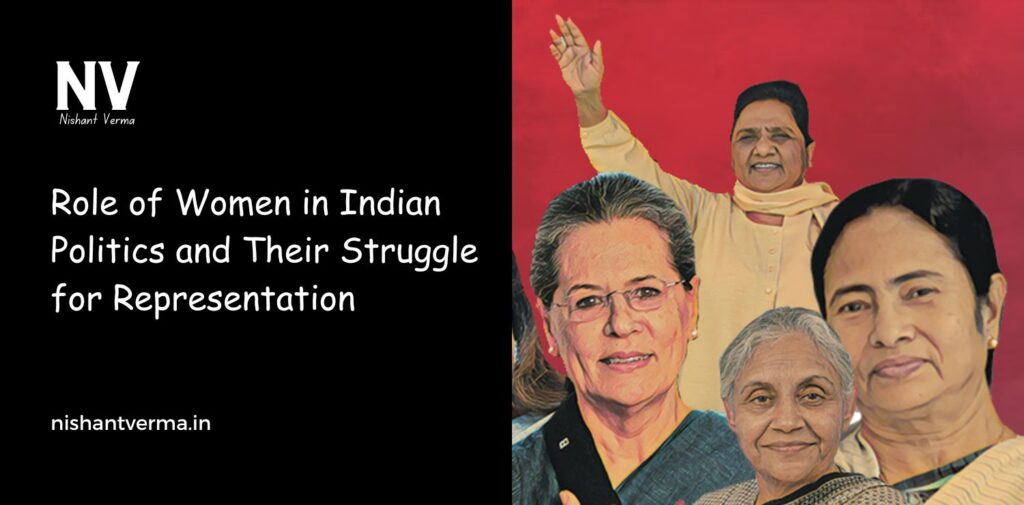India, a land full of diverse cultures, languages, and religions, has always had women who played an important part in shaping the country. While many women were part of India’s history, it wasn’t always easy for them to be heard in politics. Politics is the art of governing a country, making laws, and solving problems that affect people’s daily lives. Women, like men, have always had ideas and dreams for a better India, but they faced many struggles to be part of the decision-making process. This article will explain the role of women in Indian politics and how they fought hard to be represented and heard.
Early Struggles: Women in Pre-Independence India
Before India became independent in 1947, women had very few rights. They were not allowed to speak in public meetings or take part in politics. Society believed that politics was only for men, and women were expected to stay at home, take care of the family, and support their husbands.
However, many strong and brave women fought against this idea. One of the most famous women during the struggle for India’s independence was Sarojini Naidu. She was not only a poet but also a leader who worked hard for the country’s freedom. She was the first woman to become the president of the Indian National Congress (INC) and one of the first women to hold a high position in Indian politics.
Another great woman from the freedom movement was Kamini Roy, who fought for women’s education and their rights. Kasturba Gandhi, wife of Mahatma Gandhi, also supported women’s rights and participated in many movements to end British rule in India.
These women, along with many others, showed the world that women could also be strong leaders and could work for the betterment of society.

After Independence: Women’s Rights and Representation
When India became independent in 1947, the country began to shape its new government and political system. The first step was the creation of a new Constitution, which was written by Dr. B.R. Ambedkar and other leaders. The Indian Constitution gave equal rights to men and women, ensuring that both had the same opportunities in education, employment, and politics.
Even though women were given equal rights, their participation in politics was still very low. This was because, for many years, women were not encouraged to participate in politics or decision-making processes. In many parts of India, women were still seen as someone who should stay at home and take care of the family. As a result, only a few women entered politics, while many others continued to be left behind.
Early Female Politicians: Leading the Way
The first woman who really made her mark in post-independence Indian politics was Indira Gandhi, the first and only woman to become the Prime Minister of India. Indira Gandhi’s leadership changed the course of Indian politics. She became the symbol of strength, determination, and leadership for many women across the country.
During her time as Prime Minister, she made many important decisions, including taking steps to improve the lives of the poor and introducing various programs to support women’s rights. However, despite her role as a powerful leader, women in India continued to struggle for equal representation in the political world.

The Struggle for Women’s Representation in Politics
Although Indian women have always worked hard in politics, their numbers were low in important political roles. The struggle for women’s political representation began to gain attention in the 1980s and 1990s. A key event in this struggle was the Women’s Reservation Bill, which aimed to give 33% of the seats in Parliament and State Assemblies to women.
This bill, however, faced strong opposition. Many political leaders, both men and women, argued that giving more seats to women would not be fair and would upset the current balance. Some believed that women were not experienced enough to handle important political responsibilities, while others feared losing their own power in politics.
Despite these challenges, many women leaders, such as Jayalalithaa in Tamil Nadu and Mayawati in Uttar Pradesh, rose to power and led their states effectively. They proved that women were capable of leading and making important decisions. However, even with these successful women, the number of women in Indian Parliament and state legislatures remained very low.
Women in Local Politics: The Panchayati Raj System
In the late 1990s, the government took a positive step toward increasing women’s representation in politics by introducing the Panchayati Raj System. This system gave women an opportunity to be elected as leaders in local bodies like Panchayats (village councils) and municipal corporations. The 73rd and 74th Amendments to the Indian Constitution in 1992 reserved 33% of the seats in these local bodies for women.
As a result, many women from rural areas started entering politics. These women, though often uneducated and unaware of political matters, began to play an important role in improving their communities. They worked to improve education, healthcare, sanitation, and local governance. This gave women the confidence to dream bigger and aim for higher political offices.
Changing the Attitude: Women’s Empowerment
The rise of women in local politics helped change people’s attitudes towards women in politics. It showed that women were not just good homemakers, but also capable leaders and decision-makers. Today, many organizations and political parties support the idea of women’s empowerment. Women’s empowerment means giving women the power to control their own lives, make their own decisions, and be leaders in their communities.
More women are being encouraged to take part in political leadership, both in India and across the world. Today, many women are entering politics through education and awareness campaigns that help them understand their rights and responsibilities. Some women in rural areas are also being trained to take up leadership roles through government programs, NGOs, and community groups.

Women’s Role in Modern Politics
In recent years, many women have held important positions in Indian politics. Sushma Swaraj was a senior leader of the Bharatiya Janata Party (BJP) and served as India’s Foreign Minister. Meira Kumar, the first woman Speaker of the Lok Sabha, played a significant role in Parliament. These women showed that Indian women could not only participate in politics but could also lead at the highest levels.
Today, the presence of women in Indian politics is still growing, but there is much work to be done. There are still many barriers that women face, such as societal expectations, gender bias, and a lack of financial resources. However, the rise of women like Nirmala Sitharaman, Smriti Irani, and Mamata Banerjee shows that women in India are becoming stronger in politics.
Conclusion: The Future of Women in Indian Politics
Women in India have come a long way, from struggling to find their voice in politics to becoming leaders in their own right. Their participation in politics is essential for a better future, as women bring unique perspectives and ideas to the table. While there are still challenges ahead, the continued empowerment and involvement of women in politics will ensure that India moves towards a more equal and just society.
The journey of women in Indian politics is far from over, but with each step, they are getting closer to a future where they can be equally represented and respected in every decision that shapes the nation.




